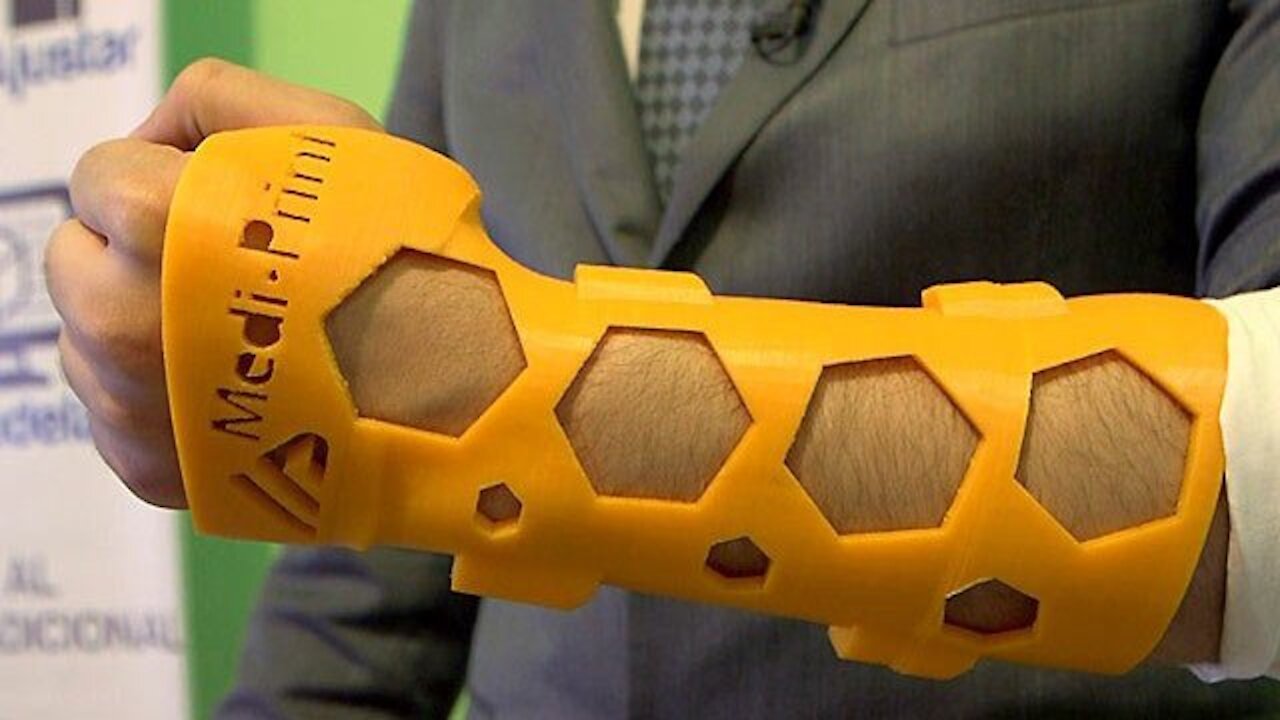Premium Only Content

Custom 3D Printed Plastic Casts For Broken Bones - Way Better Than Old Casts
MediPrint's 3D-printed NovaCast is breathable and lightweight, could replace itchy, smelly plaster casts in the future. Plaster casts have been common tool in a doctor’s arsenal for centuries. But like any medical tool that has been used for centuries, it’s not exactly foolproof. The accumulation of sweat and dirt and a lack of ventilation can cause infections and significant discomfort, so why not find a 21rst century alternative? That is, in essence, exactly what one Mexican startup is doing. Founded by a group of graduates from UNAM University, MediPrint is working on the already patented NovaCast, a 3D printed customizable alternative for casts that can be washed and weighs up to ten times less than plaster.
Like so many startups, MediPrint actually started when one of its founders came across complications in his day life. “The project started when my mom had an accident at work and broke her left hand. They put her plaster cast on wrong, and they had to surgically fracture her hand again to replace it correctly. Unfortunately, they again placed the splint wrong and finally diagnosed her with 50 percent disability in that hand,” said co-founder Zaid Badwan. Badwan therefore assembled a team of UNAM graduates that also includes Andrés Souza, Carlos Hansen, Ulises Martinez and Nahme Pineda, with plenty of engineering, management, entrepreneurship, business, programming, 3D modeling and printing experience between them.
As Badwan, who has a background in Mechanical Engineering, explains, plaster is actually not a very hygienic medical material at all. “The material with which conventional splints are made is plaster, which is highly hygroscopic. This means that it absorbs sweat and causes the bacteria to proliferate because there almost no ventilation,” he explained. In worst case scenarios, you can lose a limb because of the complications caused by ulcers. Sometimes bones do not properly heal due to badly placed casts either.
That’s exactly why the NovaCast is such an appealing alternative. Made with 3D printing, it is not only ten times lighter than cumbersome plaster casts, but it is also removable, visually appealing and can be personalized. Most importantly, you can bathe with it, preventing the accumulation of bacteria. While some medical professionals rely on 3D scans or CT scan data to generate 3D printable medical accessories, the NovaCast is actually generated by an algorithm. “It only requires that the doctor enters the data, before it automatically generates the ideal geometry for 3D printing,” Badwan explains. Not only does this save hardware costs, it also means medical professionals won’t have to work with CAD software while they should be working with patients.
Because the NovaCast is so thin, it can be 3D printed in just three to four hours, depending on the size of the limb and cast. “We are currently doing research and development to reduce that time to one hour. The next steps are bringing this technology to hospitals and increase the number of 3D printers,” Badwan says. “We are getting advice from several specialists provide medical backing, and we are also still constantly searching for new solutions to the problems that people face every day when they require a medical device,” he says. It is expected that the final device will be around a third cheaper than existing alternatives – perfect for the poorer regions of Mexico.
The first results of their work are already paying off. Several months ago, they helped an elderly lady who was expected to spend a year in bed after breaking her hip. “We did a 3D scan of the lady and create a medical device that is perfectly adjusted to the shape of her body. It was reinforced with carbon fiber, which made it lighter and more resilient. The doctor approved it and the next day after placement, the patient was walking again,” Badwan said.
Though their NovaCast is still under development, MediPrint recently found a big boost on Mexican crowdfunding platform fondeadora.mx, where they raised more than $8000 USD to extend their 3D printing capacity with a high volume 3D printer. “Having a new printer will allow us to have more machine time, which we will use to continue their research, modify and improve their machines and avoid the unfortunate dilemma between producing or continuing innovation,” they say. The startup has also received financial backing the Mexican National Entrepreneur Institute Inadem, and have also found success in a competition organized by the Society of Former Students of the Faculty of Engineering of the National Autonomous University of Mexico (UNAM), winning 150,000 pesos (more than $8500 USD). All those funds will be used to increase their 3D printing capacity.
Music: Twilight Streets by Dhruva Aliman
Amazon- https://amzn.to/2B9tGa7
https://music.apple.com/us/artist/dhruva-aliman/363563637
https://dhruvaaliman.bandcamp.com/album/road-of-fortunes
http://www.dhruvaaliman.com/
Spotify - https://open.spotify.com/artist/5XiFCr9iBKE6Cupltgnlet
#medical
#invention
#smart
-
 52:51
52:51
Seeker Land
13 days agoMystery of the Ancient Druids - Lost Celtic Mystics - Full Documentary
1451 -
 1:23
1:23
WorstAustralianDrivers
3 years agoBetter Late Than Never 2
1042 -
 1:01:05
1:01:05
Trumpet Daily
21 hours ago $3.29 earnedGermany Started Two World Wars and Now Wants Nuclear Weapons - Trumpet Daily | Mar. 7, 2025
2.74K15 -
 57:07
57:07
Stephen Gardner
15 hours ago🚨BREAKING: Musk STUNS even Trump with LATEST FRAUD DISCOVERY!!
92K195 -
 2:26:47
2:26:47
FreshandFit
11 hours agoRatchet Chick Gets Kicked Out "Gracefully" For THIS...
102K147 -
 2:05:17
2:05:17
TimcastIRL
14 hours agoDemocrat ACTBLUE In CHAOS, Theories Over DOGE Cutting SLUSH FUND Go Wild w/Hotep Jesus | Timcast IRL
224K188 -
 1:11:43
1:11:43
Roseanne Barr
18 hours ago $53.97 earned"They are all Monsters" | The Roseanne Barr Podcast #89
103K134 -
 9:26:16
9:26:16
Dr Disrespect
22 hours ago🔴LIVE - DR DISRESPECT - WARZONE - PR ATTEMPTS
152K33 -
 3:48:30
3:48:30
Akademiks
14 hours agoDay 1/30. Lebron checks stephen a Smith. TOry Lanez talking CRAZY asf. Lil Ronnie K*Ilers Caught
96.5K5 -
 3:47:54
3:47:54
I_Came_With_Fire_Podcast
17 hours agoDEPARTMENT OF EDUCATION AXED | GAZA ULTIMATUM
83.4K18